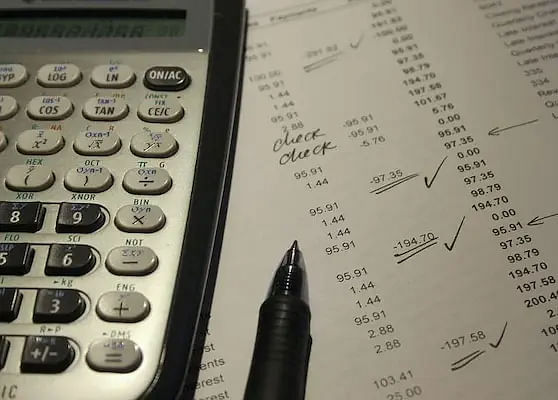The Common Admission Test (CAT), a national-level management aptitude test for candidates seeking admission to MBA programs. The main goal is to assess and select applicants for admission to Master of Business Administration (MBA) programs.
CAT Exam is for What Purpose? The purpose of the CAT Exam is to evaluate a candidate's readiness for Master of Business Administration and employment in business and administration. The exam evaluates their quantitative aptitude, verbal ability, logical reasoning, and data interpretation skills.
The Common Admission Test, or CAT, is a national-level exam conducted for applicants seeking admission to postgraduate management programs, Master of Business Administration (MBA).
What is the Purpose of the CAT Exam?
In India, entrance to postgraduate management programs at several Indian Institutes of Management (IIMs) and other prestigious business schools is mainly determined by the results of the CAT (Common Entrance Test) exam, a standardised test administered in the nation.
The Purpose of the CAT Exam is:
- Admission to MBA Programs: The main goal of the Common Admission Test (CAT) is to assess and select applicants for admission to Master of Business Administration (MBA) programs and other management courses that reputed Indian universities provide.
- Candidate Selection for Management Studies: In addition to the IIMs, CAT scores are a crucial factor used by numerous other Indian business schools and institutes when choosing applicants for their management programs. As a result, the CAT is now a commonly used and respected entrance exam for business education.
- Evaluation of Aptitude and Skills: The MBA course curriculum checks a candidate's aptitude, analytical thinking, numeric skills, verbal ability, and data interpretation abilities are all evaluated by the CAT exam. These qualities are necessary for success in leadership and management positions.
- Common Evaluation Standard: For many management institutes, CAT offers a common evaluation standard. Comparing and evaluating applicants on a uniform scale enables these institutions to expedite the admissions process and guarantee equity.
- Improve Professional Prospect in Career: The CAT score can significantly improve one's professional prospects by opening doors to well-paying jobs across a range of industries.
- Development of Versatile Skills: Essential skills, including critical thinking, problem-solving, time management, and decision-making abilities, are developed during CAT preparation.
CAT Exam Highlights
The IIM administers the Common Admission Test (CAT), a national-level management aptitude test for candidates seeking admission to MBA programs and offers multiple MBA specialisations. The CAT exam is conducted in three sessions on a single day at roughly 400 test centres spread throughout 155 Indian cities.
| Parameters | Details |
| Exam Name | Common Admission Test (CAT) |
| Exam Duration | 2 hours (40 minutes per section) |
| No. of Sections | 3 |
| Total Questions | 66 (tentative) |
| CAT total marks | 198 Marks |
| Examination Mode | Online CBT Based |
| Language of Exam | English |
| Types of question | MCQ and TITA (Type in the Answer) |
Also Read: CAT Application Form 2024
Eligibility Criteria of CAT Exam
The eligibility for the CAT exam is candidates must at least be a graduate of any stream; other specific CAT qualifying requirements are listed below:
- To participate in CAT 2023, candidates must hold a bachelor's degree from an accredited university with a minimum of 50% aggregate or an equivalent CGPA (45% aggregate for SC, ST, and PWD/DA category).
- The bachelor's degree program should last three years, regardless of whether it is taught in-person or remotely.
- Candidates may also take the CAT if they have earned the necessary percentage in a professional degree (CA, CS, ICWA, or FCAI).
- Applicants who are waiting for their results or who are in the last year of a bachelor's degree or an equivalent certificate may also take the CAT 2023 exam.
Also Read: CAT Score vs Percentile 2023: Check Score Calculation Formula
Syllabus of CAT Exam
The syllabus of the CAT exam comprises three sections, which are Verbal Ability and Reading Comprehension, Data Interpretation and Logical Reasoning, and Quantitative Aptitude. The sub-topics of each of the sections are tabulated below carefully:
| CAT Syllabus | Topics |
| Verbal Ability & Reading Comprehension (VARC) |
Reading Comprehension Para Jumbles Para Summary Odd Sentence Out |
| Data Interpretation & Logical Reasoning (DILR) |
Set Theory (Variables) Set Theory Puzzles Puzzles with Additional Data Coding-Decoding Series |
| Quantitative Aptitude (QA) |
Arithmetic Algebra Modern Maths Number System Geometry Mensuration |
Also Read: CAT Previous Year Question Paper With Solution: Download PDFs
CAT Verbal Ability and Reading Comprehension Syllabus
The detail CAT Verbal Ability and Reading Comprehension Syllabus is tabulated below:
| Verbal Reasoning Syllabus | |
| English Usage or Grammar | Jumbled Paragraph |
| Summary Questions | Fill in the blanks |
| Reading Comprehension | Meaning-Usage Match |
| Meaning-Usage Match | Analogies or Reverse Analogies |
| Cloze Passage | Sentence Correction |
CAT Data Interpretation and Logical Reasoning Syllabus
The detail CAT Data Interpretation and Logical Reasoning Syllabus is tabulated below:
| Topic | Sub Topics |
| Data Interpretation |
Tables Data Caselets – Reasoning-Based DI Column Graphs Bar Graphs Venn Diagrams Line Charts Pie Charts Scatter Plot Radar Chart Routes and Network Bubble Chart |
| Logical Reasoning |
Binary Logic Games and Tournaments Arrangements Team Formations Order and Ranking |
Quantitative Aptitude (QA) Syllabus
The detail CAT Quantitative Aptitude Syllabus is tabulated below:
| Topic | Sub Topics |
|
Number System |
LCM and HCF Divisibility Rules Base Change Finding Units place and tens place of a number Cyclicity Remainders Prime Factorisation Factorials Indices and Surds |
|
Arithmetic |
Time, Distance and Speed Time and Work, Pipes and Cisterns Simple Interest and Compound Interest Ratios, Proportions and Variations Percentages and Averages Profit and Loss, Discount Mixtures and Alligations |
|
Geometry and Mensuration |
Circles Triangles Polygons Coordinate geometry Lines and Angles Trigonometry Cone Cylinder Sphere Cube/Cuboid Prism Pyramid |
|
Algebra |
Inequalities and Modulus Functions and Groups Linear and Quadratic Equations Polynomials Logarithms Algebraic Identities Maxima and Minima |
|
Modern Mathematics |
Permutations and Combinations Probability Set Theory & Venn Diagram Binomial Theorem Arithmetic progression, Geometric progression, Harmonic progression |
CAT Exam Marking Scheme
The duration of the CAT exam is 120 minutes, and 40 minutes each are restricted to all the sections. The number of questions, including MCQ and non-MCQ types, is mentioned below in the table for each of the sections.
| Sections of exam | No. of questions | MCQs | Non- MCQs | Details |
|
VARC |
24 |
19 |
5 |
16 RC Questions-Four passages with four questions each. Eight Language Proficiency Questions Three Para jumbles Two Odd Sentence Para jumbles Three Para summary Questions. |
|
DILR |
20 |
15 |
5 |
4 sets in total - 2 sets of 6 questions each - 2 sets of 4 questions each |
|
QA |
22 |
14 |
8 |
Arithmetic Algebra Modern Maths Number System Geometry Mensuration |
|
Total |
66 |
48 |
18 |
- |
Also Read: CAT Exam Pattern 2023: Paper Pattern, Marking Scheme
Preparation Resources for CAT Exam
Preparation for the CAT exam can be done via some excellent sources for each of the subjects listed down below and students must practise CAT previous year's paper.
Verbal Ability & Reading Comprehension (VARC)
- High School Grammar and Composition by Wren and Martin
- Word Power Made Easy by Norman Lewis
- Verbal Ability and Reading Comprehension For The CAT by Nishit Sinha
- How to Prepare for Verbal Ability and Reading Comprehension for the CAT by Arun Sharma and Meenakshi Upadhyay
- McKinsey Insights
- The Guardian
- Aeon Essays
Data Interpretation & Logical Reasoning (DILR)
- CAT Data Interpretation and Logical Reasoning by Gautam Puri
- A Modern Approach to Logical Reasoning by RS Agarwal
- How to Prepare Logical Reasoning for CAT by Arun Sharma
- Logical Reasoning and Data Interpretation by Nishit K. Sinha
- Analytical and Logical Reasoning for CAT by Peeyush Bhardwaj
- Data Interpretation for CAT by Arun Sharma
Quantitative Aptitude (QA)
- How to Prepare for Quantitative Aptitude for the CAT by Arun Sharma
- Quantitative Aptitude for the CAT – Nishit Sinha
- Quantitative Aptitude for the CAT – Sarvesh Verma
Also Read: CAT Books 2023: Top CAT Preparation Books Recommended























